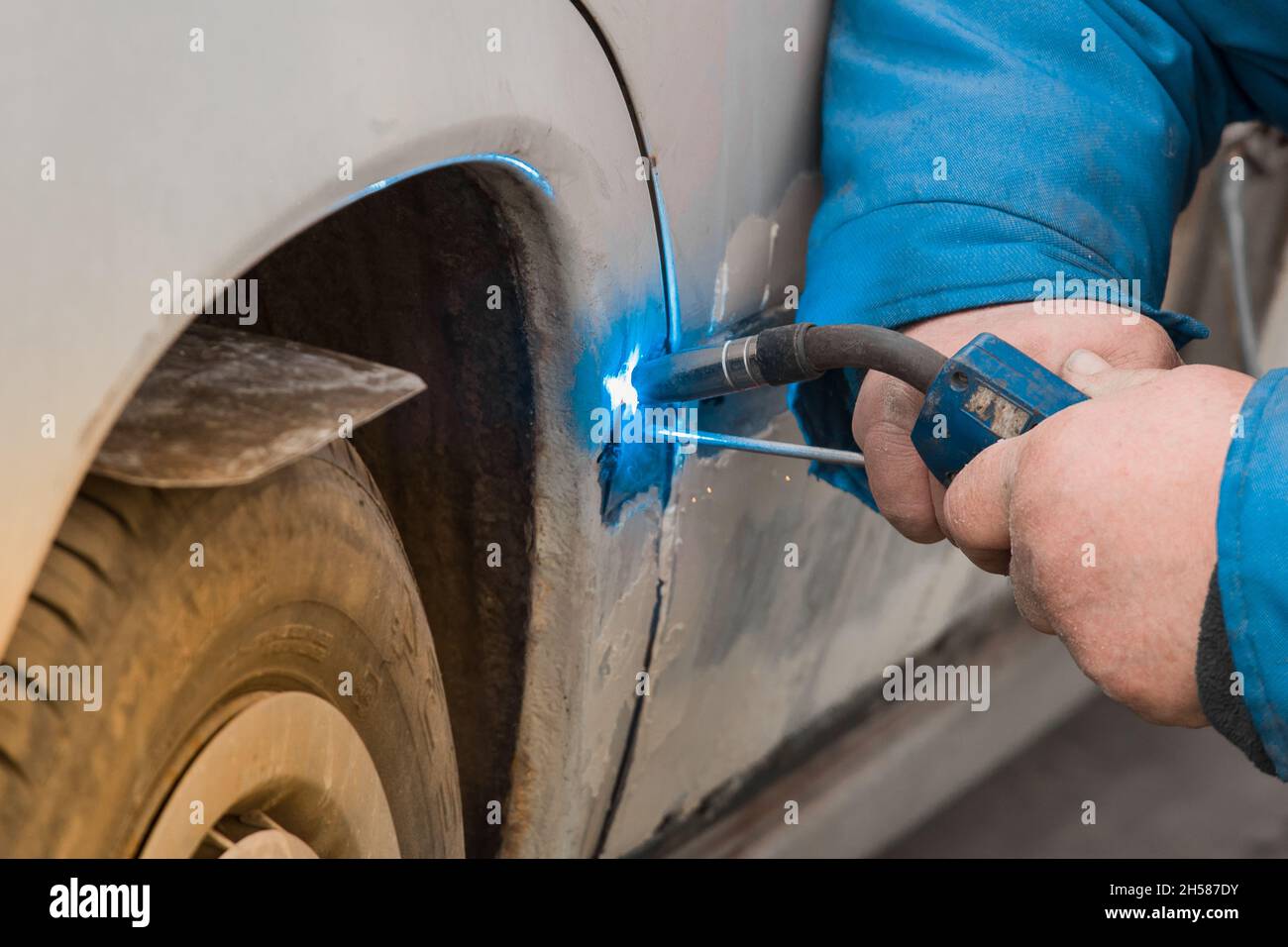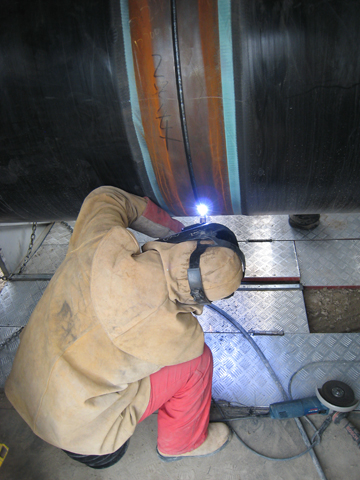Everything about Welding: Trick Insights Into Techniques and Ideal Practices for Success
Welding incorporates a range of methods, each suited for particular products and applications. Understanding these methods, such as GMAW, SMAW, and TIG, is crucial for achieving perfect results. The right tools and safety and security methods can not be neglected. As prep work and repairing play critical functions in the welding procedure, grasping these elements can substantially boost the top quality of the last item. What are the essential variables that guarantee a successful weld?
Understanding Various Welding Techniques
Welding techniques encompass a variety of methods, each suited to specific applications and materials. Amongst the most typical methods are Gas Steel Arc Welding (GMAW), Secured Metal Arc Welding (SMAW), and Tungsten Inert Gas Welding (TIG) GMAW, additionally called MIG welding, is preferred for its rate and adaptability, making it excellent for slim materials. SMAW, or stick welding, is preferred for its simplicity and performance in outdoor settings, particularly with thicker metals. TIG welding provides accuracy and control, making it suitable for complex work and non-ferrous steels (Montana Mobile Welding and Repair Fabrication). Each method has its one-of-a-kind benefits and factors to consider, allowing welders to pick the finest method based on the project's needs, product type, and preferred results. Understanding these methods is vital for effective welding
Essential Welding Devices and Tools
While various welding techniques call for specific skills, the right equipment and tools are equally vital for accomplishing high quality results. Vital welding devices consists of welding equipments, which vary depending upon the method-- such as MIG, TIG, or stick welding. Protective equipment, including handwear covers, aprons, and headgears, assurances safety and security and comfort during the procedure. Additionally, fixtures and clamps assist protect materials in area, ensuring accuracy in welds. Consumables like welding poles, cable, and shielding gas are also vital components that influence the quality of the weld. Devices such as grinders and cutters help with surface area preparation and post-weld ending up, adding to an expert outcome. Spending in top quality tools inevitably improves the effectiveness and efficiency of welding projects.
Safety And Security Practices in Welding
Proper security methods are crucial in the welding market to protect employees from possible hazards. Welders have to use proper personal protective tools (PPE), consisting of safety helmets with correct shading, gloves, and flame-resistant clothes. Adequate air flow is important to lower direct exposure to unsafe fumes and gases generated throughout the welding process. In addition, employees should be learnt the proper handling of welding tools to avoid mishaps. Fire safety and security steps, such as keeping combustible materials far from the welding area and having fire extinguishers easily offered, are essential. Routine assessments of devices and workspaces can assist identify possible threats before they result in crashes. By sticking to these security techniques, welders can create a more secure working environment and lessen risks related to their profession.
Readying Products for Welding
Preparing materials for welding is a vital step that greatly affects the high quality and stability of the end product (Fabrication). Correct prep work involves cleaning up the surface areas to get rid of contaminants such as dust, oil, and corrosion, which can endanger the weld. Strategies such as grinding, sanding, or using solvents are commonly used to attain a tidy surface area. In addition, ensuring that the materials fit together well is vital; gaps can lead to weak welds. It's also vital to take into account the placement and positioning of the parts, as this will certainly influence the ease of welding and the last end result. Ultimately, choosing the proper filler material and making sure compatibility with the base metals is necessary for attaining strong, durable welds
Tips for Achieving High-Quality Welds
Attaining high-grade welds needs interest to information and adherence to best methods throughout the welding procedure. Proper joint preparation is essential, guaranteeing surfaces are free and clean from contaminants. Choosing the suitable filler product and welding method based upon the base metals is crucial for suitable bonding. Maintaining consistent travel speed and angle while welding can avoid issues and promote image source harmony. Additionally, controlling warm input is crucial; extreme warmth can lead to bending and compromised joints. If needed, consistently inspecting the welds during the procedure permits for immediate adjustments. Lastly, have a peek at this site utilizing ideal post-weld therapies, such as cleaning and tension relief, can boost the durability and integrity of the weld, ultimately guaranteeing a successful outcome.
Troubleshooting Common Welding Issues
Welding typically provides challenges that can impact the quality and integrity of the end product. Usual concerns such as porosity, irregular weld grains, and getting too hot can develop, each needing details fixing strategies. Understanding these troubles is necessary for welders to boost their skills and accomplish perfect results.
Porosity Troubles Explained
Although porosity can typically be overlooked, it stays a critical problem in welding that can endanger the integrity of a finished product. Porosity describes the presence of little gas pockets within the weld grain, which can damage the joint and lead to early failing. This problem usually occurs from impurities, moisture, or incorrect protecting gas insurance coverage throughout the welding procedure. To minimize porosity, welders should confirm that the base products are dry and clean, utilize proper protecting gases, and maintain consistent welding specifications. On a regular basis evaluating the equipment and atmosphere can also aid recognize potential issues prior to they show up in the weld. Dealing with porosity effectively is important for accomplishing solid, durable welds that fulfill quality requirements.

Irregular Weld Beads
Irregular weld beads can considerably affect the quality and stamina of a completed product. Different factors contribute to this issue, including inappropriate travel rate, wrong amperage settings, and irregular electrode angles. When the welder moves too quickly, a grain might appear narrow and lack penetration, while relocating also slowly can cause excessive accumulation. Additionally, making use of the wrong amperage can lead to either damaging or too much spatter, both of which concession weld honesty. The welder's strategy, such as irregular torch motion, can also result in irregular bead look. To alleviate these troubles, welders should concentrate on keeping steady, regulated activities and making certain appropriate devices settings to achieve harmony in their welds. Consistency is vital to achieving strong and reputable welds.
Getting Too Hot and Warping Issues
Excessive warmth during the welding process can bring about considerable overheating and contorting problems, influencing the architectural honesty of the work surface. These troubles frequently show up as distortion, which can endanger positioning and fit-up, making more setting up testing. Aspects adding to overheating consist of the option of welding criteria, such as voltage and take a trip rate, along with the sort of material being welded. To alleviate these issues, welders should preserve consistent traveling rate sites and ideal warmth input while keeping an eye on the work surface temperature. Furthermore, preheating or post-weld heat therapy can help ease anxieties triggered by rapid cooling - Fabrication. Regular examination and adherence to ideal techniques are vital in avoiding overheating and making certain the long life and reliability of bonded frameworks
Regularly Asked Inquiries
What Are the Job Opportunities in the Welding Market?
The welding industry uses varied profession opportunities, consisting of positions as welders, teachers, inspectors, and designers. Experts can operate in manufacturing, construction, aerospace, and automotive markets, profiting from solid need and affordable salaries in different functions.
Just How Can I Improve My Welding Speed Without Giving Up Quality?
To boost welding rate without compromising quality, one must practice effective methods, preserve devices, optimize setups, and improve hand-eye control. Regular training and looking for responses can additionally significantly add to achieving quicker, high-grade welds.
What Qualifications Are Available for Welders?
Many accreditations exist for welders, including those from the American Welding Society (AWS), the National Facility for Construction Education and Study (NCCER), and different industry-specific companies. These credentials improve employability and demonstrate skill effectiveness.
Exactly How Does Welding Influence the Qualities of Metals?
Welding affects the residential or commercial properties of metals by altering their microstructure, which can cause changes in toughness, ductility, and solidity. Heat input and cooling prices during the process considerably influence these product attributes.
Can I Bonded Dissimilar Metals Together?
